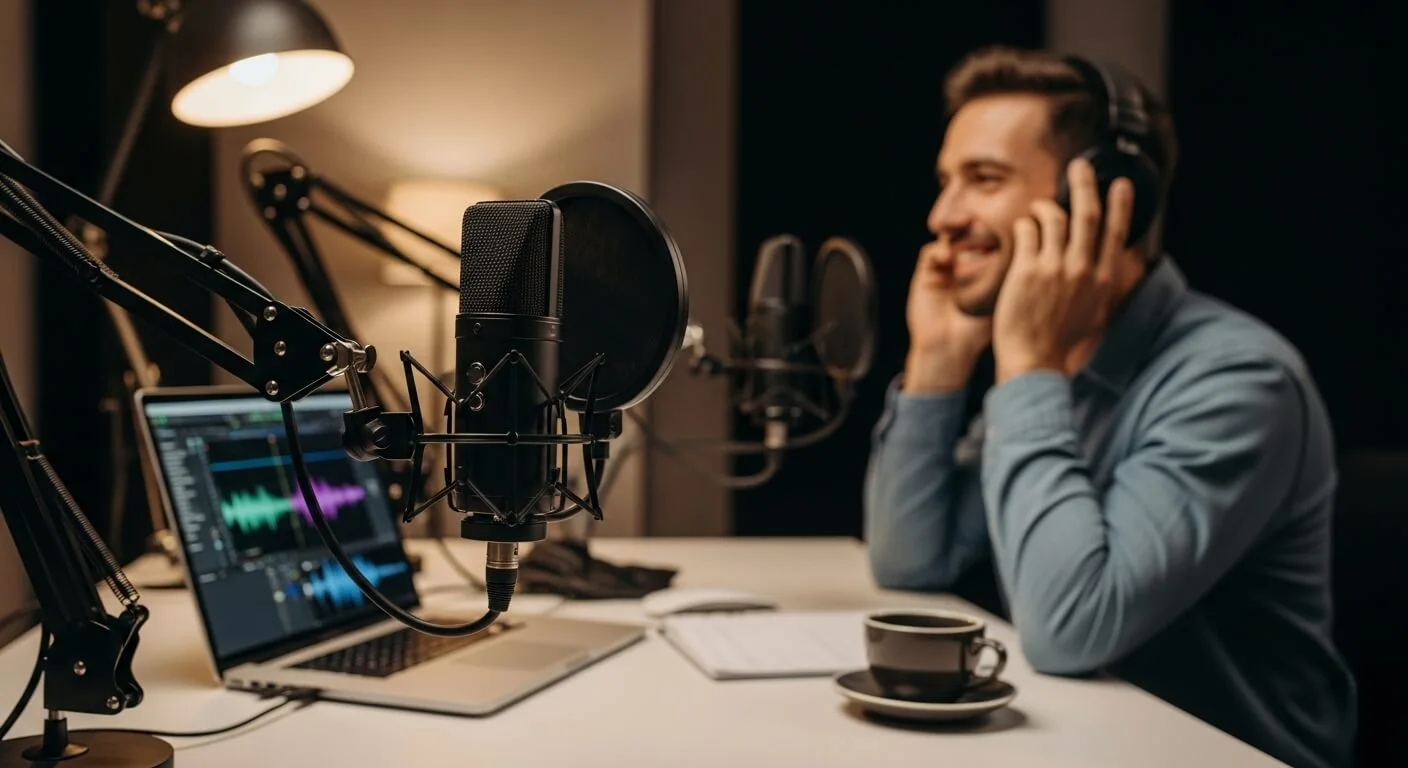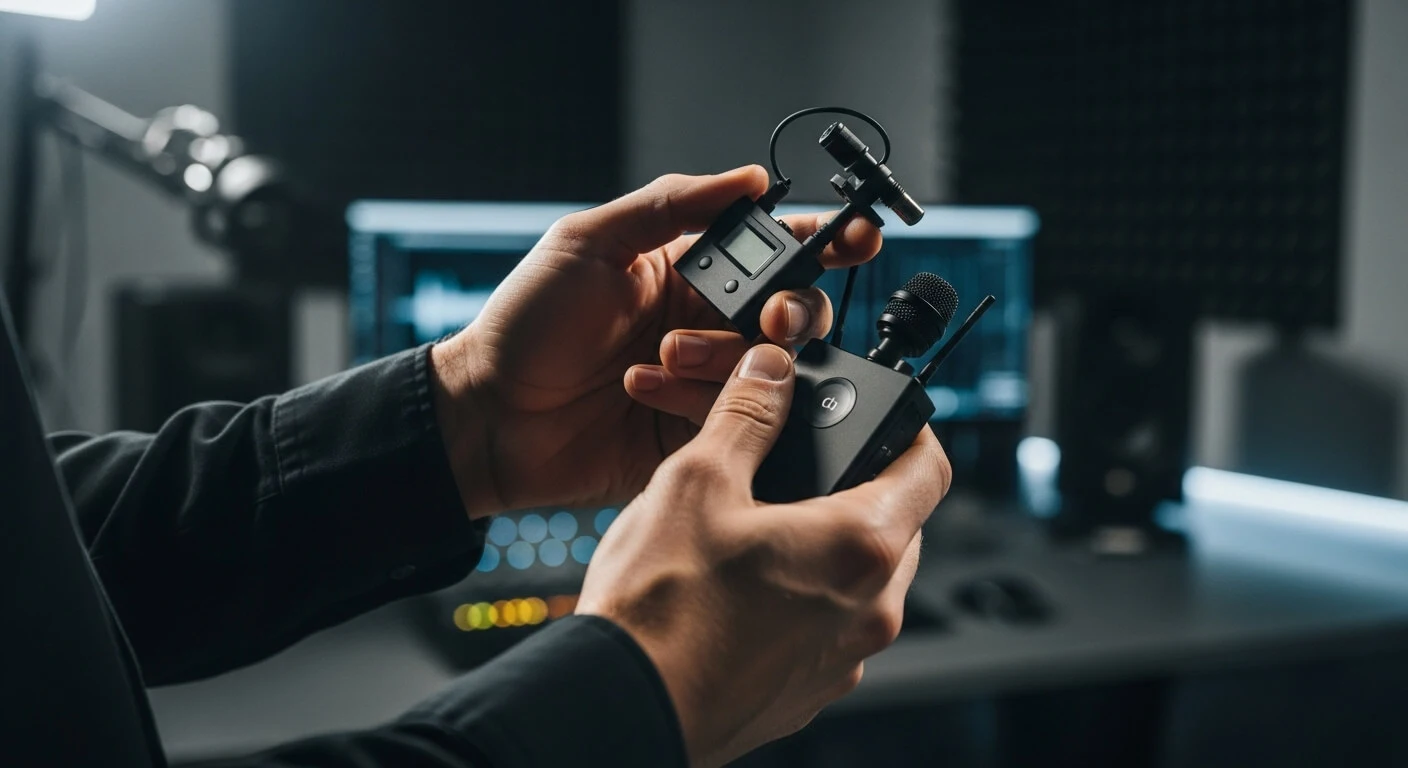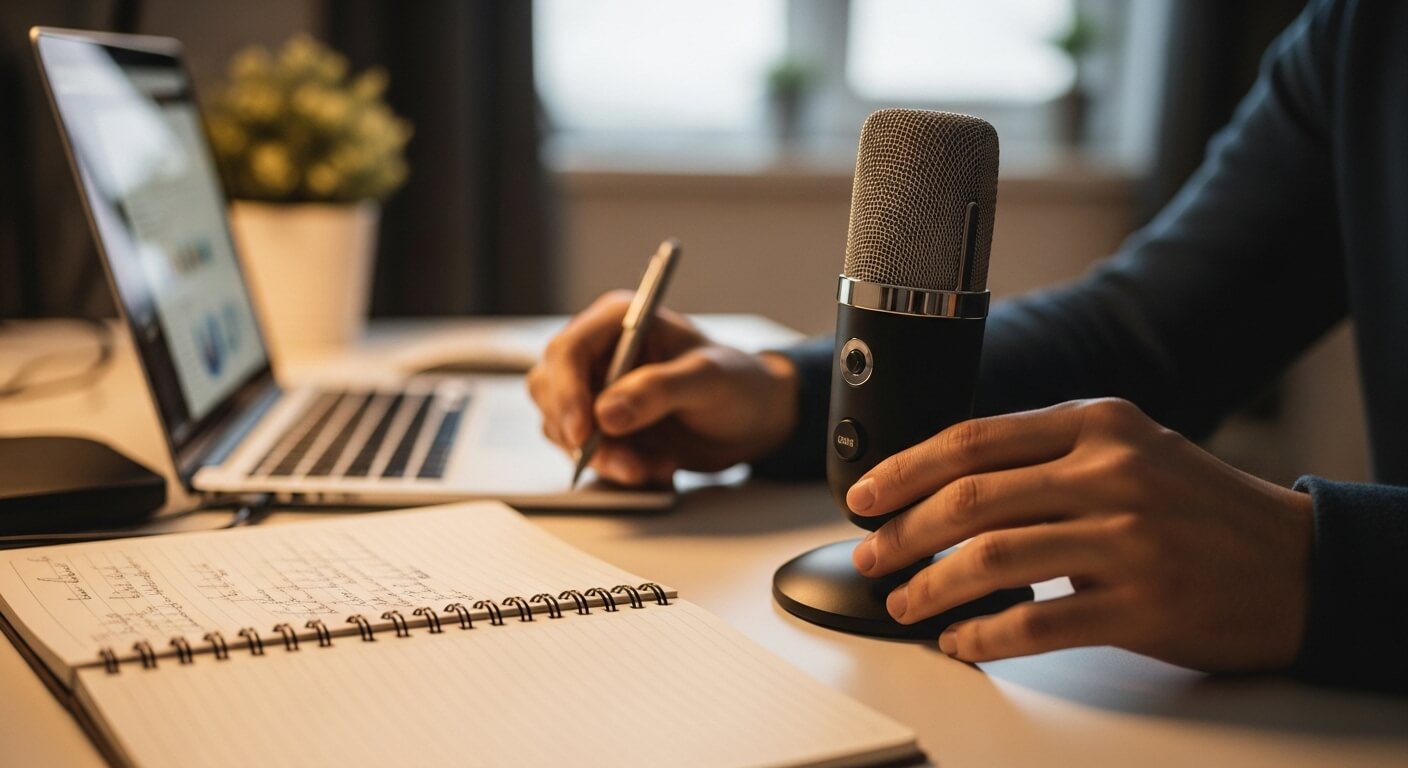Starting a podcast or upgrading your home studio can feel overwhelming, especially when it comes to audio. Your voice is the heart of your show, and a crisp, clear recording is non-negotiable. That’s why finding the best usb microphone for podcasting is one of the most critical decisions you’ll make. A great USB mic simplifies the process, eliminating the need for complex audio interfaces and mixers. You just plug it in and start recording.
Table of Contents
Toggle5 Best USB Microphones for Podcasting
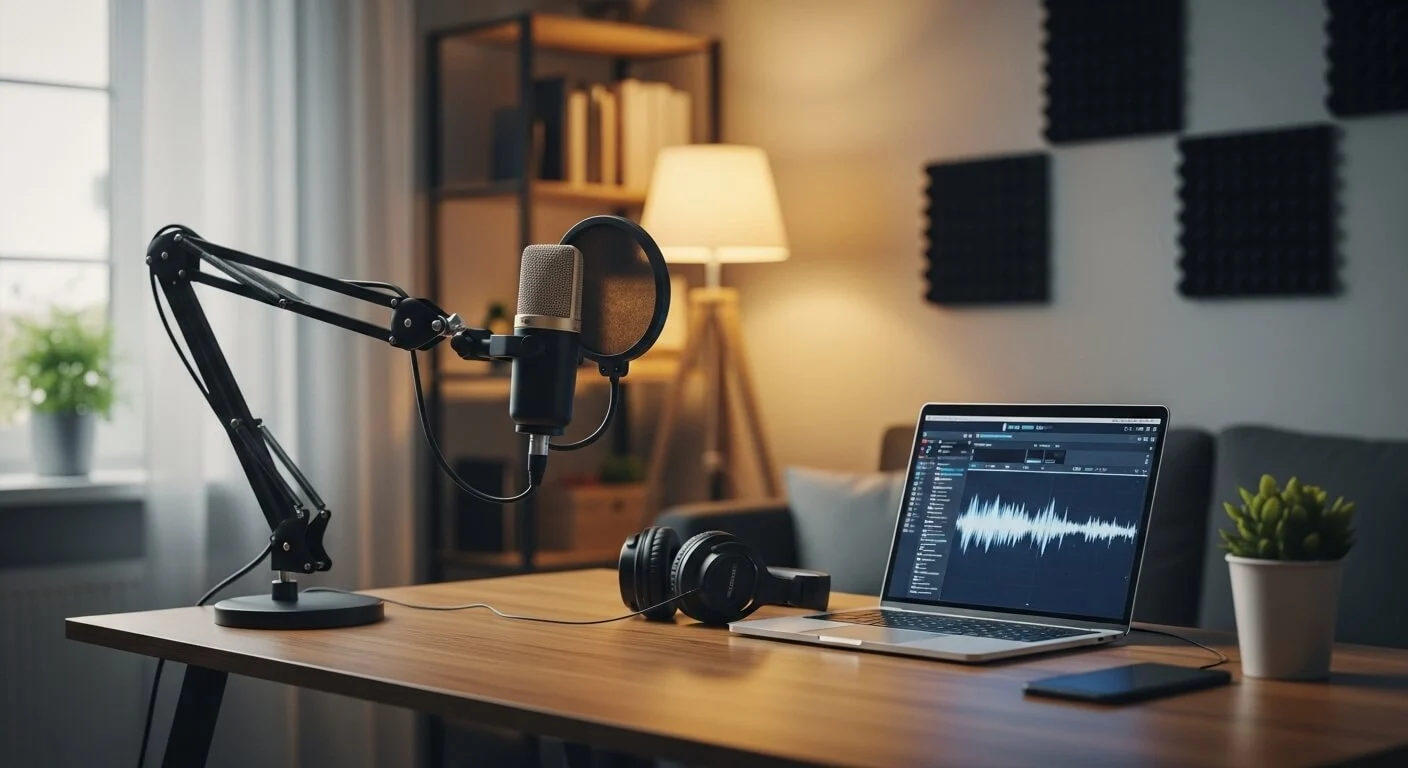
After analyzing dozens of best-selling products, sifting through thousands of verified customer reviews, and comparing technical specifications, we’ve curated this list of the top 5 USB microphones on Amazon. Each product boasts a stellar 4-star rating or higher, backed by a significant number of satisfied users. We focused on models that offer exceptional value, user-friendly features, and broadcast-quality sound. This article reviews the top USB microphones to help you find the perfect match for your voice and budget, ensuring you make an informed and confident purchase.
Blue Yeti USB Microphone
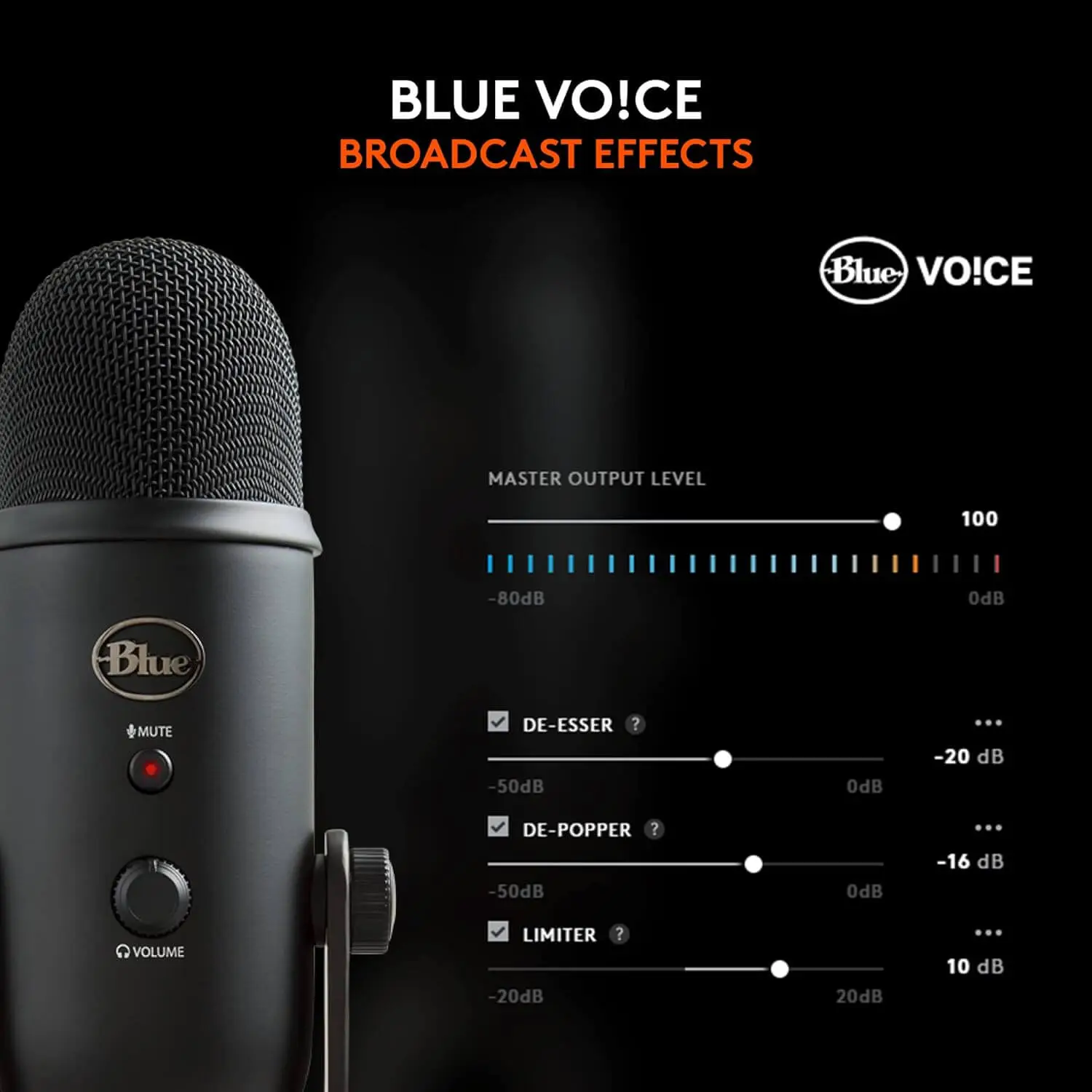
The All-Rounder and Industry Standard
The Blue Yeti is arguably the most recognizable USB microphone in the world, and for good reason. It’s a versatile workhorse that has powered countless podcasts, streams, and YouTube channels with its reliable performance and solid construction.
Best Cheapest Video Editing Laptops – Reviews & Guide
- Amazon Rating: 4.6 out of 5 stars from over 65,000 reviews
- Best For: Podcasters who need versatility for solo shows, interviews, and roundtables.
Key Specifications
- Polar Patterns: Cardioid, Bidirectional, Omnidirectional, Stereo
- Sample Rate: 48 kHz / 16-bit
- Frequency Response: 20Hz – 20kHz
- Controls: Gain control, mute button, zero-latency headphone output
- Connectivity: USB-A
What Customers Are Saying
Reviewers consistently praise the Yeti’s “plug and play” simplicity and remarkable versatility. One verified purchaser noted, “The ability to switch between polar patterns is a game-changer. I use cardioid for my solo narration and switch to bidirectional for in-person interviews. The sound is rich and full.” Another long-time user mentioned, “It’s built like a tank. After five years, it still works as well as it did on day one.” Some users caution that its high sensitivity can pick up background noise, so recording in a quiet environment is recommended.
Best Budget Laptops for Video Editing and Gaming : Reviews & Guide
Pros:
- Incredible Versatility: Four polar patterns cover virtually any recording scenario.
- Excellent Sound Quality: Delivers rich, broadcast-quality audio that rivals more expensive setups.
- On-Board Controls: Easy-to-use gain dial and mute button provide instant control.
- Zero-Latency Monitoring: A built-in headphone jack lets you hear yourself in real-time without any delay.
- Durable Build: The all-metal body feels premium and is built to last.
Cons:
- Bulky and Heavy: Its large size can take up significant desk space.
- Sensitive to Background Noise: The condenser capsules can pick up unwanted room sounds if not managed.
Personal Insight:
As someone who has tested countless microphones, I believe the Blue Yeti remains a top recommendation for its sheer flexibility. It’s the perfect “first serious microphone” that can grow with you. Whether you’re recording a solo monologue or a group discussion, the Yeti adapts effortlessly, making it a truly smart investment.
Check Price and Reviews on Amazon Today!
Audio-Technica AT2020+ USB
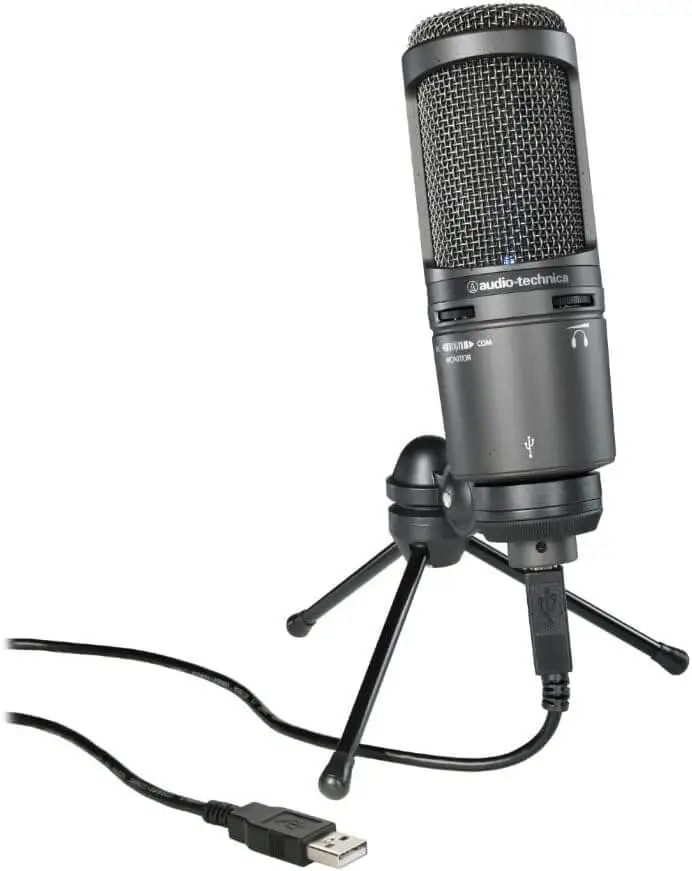
The Studio-Quality Vocal Champion
Audio-Technica is a legendary name in professional audio, and the AT2020+ USB brings their renowned studio sound to a simple, user-friendly format. This microphone is celebrated for its clarity and is often recommended for those who prioritize pristine vocal recordings above all else.
Best Waterproof Action Cams for Kayaking Beginners (Reviews & Guide)
- Amazon Rating: 4.7 out of 5 stars from over 12,000 reviews
- Best For: Solo podcasters, vocalists, and voice-over artists seeking professional-grade clarity.
Key Specifications
- Polar Pattern: Cardioid
- Sample Rate: 48 kHz / 16-bit
- Frequency Response: 20Hz – 20kHz
- Controls: Mix control, headphone volume control, zero-latency headphone output
- Connectivity: USB-A
What Customers Are Saying
The overwhelming sentiment in customer reviews is appreciation for its “crisp and detailed” sound. One podcaster wrote, “The AT2020+ makes my voice sound incredibly professional. The clarity is night-and-day compared to my old mic.” Another reviewer highlighted the mix control feature: “Being able to blend my mic audio with pre-recorded computer audio in my headphones is fantastic for timing and pacing.” A minor critique is that it doesn’t come with a robust stand, so many users recommend purchasing a separate boom arm for best results.
Best Camera for Travel Photography Lightweight and Compact : Our Top Picks
Pros:
- Exceptional Audio Clarity: Delivers the award-winning, articulate sound of the original AT2020.
- Focused Recording: The cardioid polar pattern is excellent at rejecting off-axis noise, perfect for a solo podcast.
- Advanced Monitoring: The mix control dial is a professional feature not often found at this price point.
- High-Quality Components: Features a high-quality A/D converter for superb audio fidelity.
- Durable Metal Construction: Feels solid and reliable for long-term use.
Cons:
- Single Polar Pattern: Less versatile than the Blue Yeti; strictly for front-address recording.
- Included Stand is Basic: The included tripod is small and may not be ideal for all desk setups.
Personal Insight:
If your podcast is primarily you speaking, the AT2020+ USB is one of the best choices you can make. It’s a true usb condenser microphone for vocals, focusing on one job and doing it exceptionally well. The clarity it provides gives your voice a polished, radio-ready quality that will instantly elevate your production value.
See why thousands trust the AT2020+—check it out on Amazon today!
HyperX QuadCast S
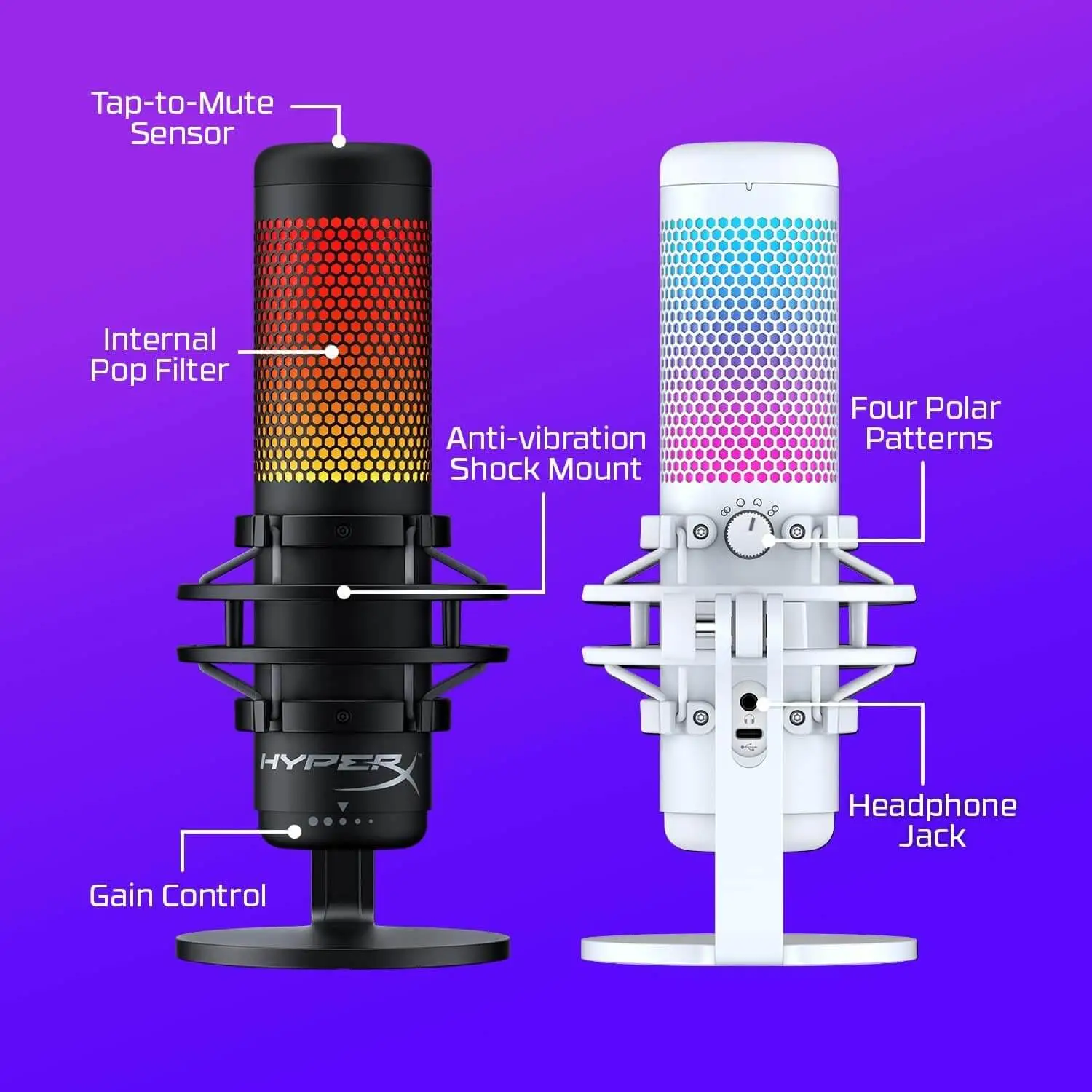
The Feature-Packed Streamer’s Delight
While heavily marketed to gamers and streamers, the HyperX QuadCast S is an outstandingly capable and stylish microphone for podcasters. It’s packed with user-friendly features, including a built-in pop filter and a unique tap-to-mute sensor that is incredibly convenient.
Best Cameras Under $500 for High Quality Photos (Expert Review)
- Amazon Rating: 4.8 out of 5 stars from over 35,000 reviews
- Best For: Podcasters who also stream or want smart, convenient features and visual flair.
Key Specifications
- Polar Patterns: Cardioid, Bidirectional, Omnidirectional, Stereo
- Sample Rate: 48 kHz / 16-bit
- Frequency Response: 20Hz – 20kHz
- Controls: Tap-to-mute sensor with LED indicator, gain control dial, polar pattern selector
- Connectivity: USB-C
What Customers Are Saying
Users rave about the tap-to-mute feature. “The top mute button is genius. I can cough or take a drink silently without fumbling for a software mute button,” one review states. The built-in pop filter also gets high marks, with another user commenting, “I love not having a bulky external pop filter in front of my face. The sound is clean and free of plosives right out of the box.” The customizable RGB lighting is a fun bonus for those with a video component to their podcast.
Best Camera for Beginners : Affordable and Easy to Use
Pros:
- Convenient Tap-to-Mute: Instantly mute the mic with a simple touch, confirmed by the LED status light.
- Built-in Pop Filter: Effectively reduces harsh plosive sounds (like ‘p’ and ‘b’) without extra equipment.
- Four Polar Patterns: Offers the same recording flexibility as the Blue Yeti.
- Integrated Shock Mount: Reduces the transfer of vibrations and handling noise.
- Striking Aesthetics: Dynamic RGB lighting can be customized or turned off.
Cons:
- Gamer-Centric Design: The aesthetic may not appeal to those seeking a more traditional studio look.
- Software Dependent for RGB: Customizing the lighting requires HyperX’s NGENUITY software.
Personal Insight:
The HyperX QuadCast S is a masterclass in thoughtful design. The features aren’t just gimmicks; they solve real-world problems for creators. As someone who values workflow efficiency, the tap-to-mute function and internal pop filter make the recording process smoother and more professional. It’s a fantastic high quality usb microphone for interviews and solo work alike.
Explore the features of the QuadCast S on Amazon now!
Rode NT-USB+
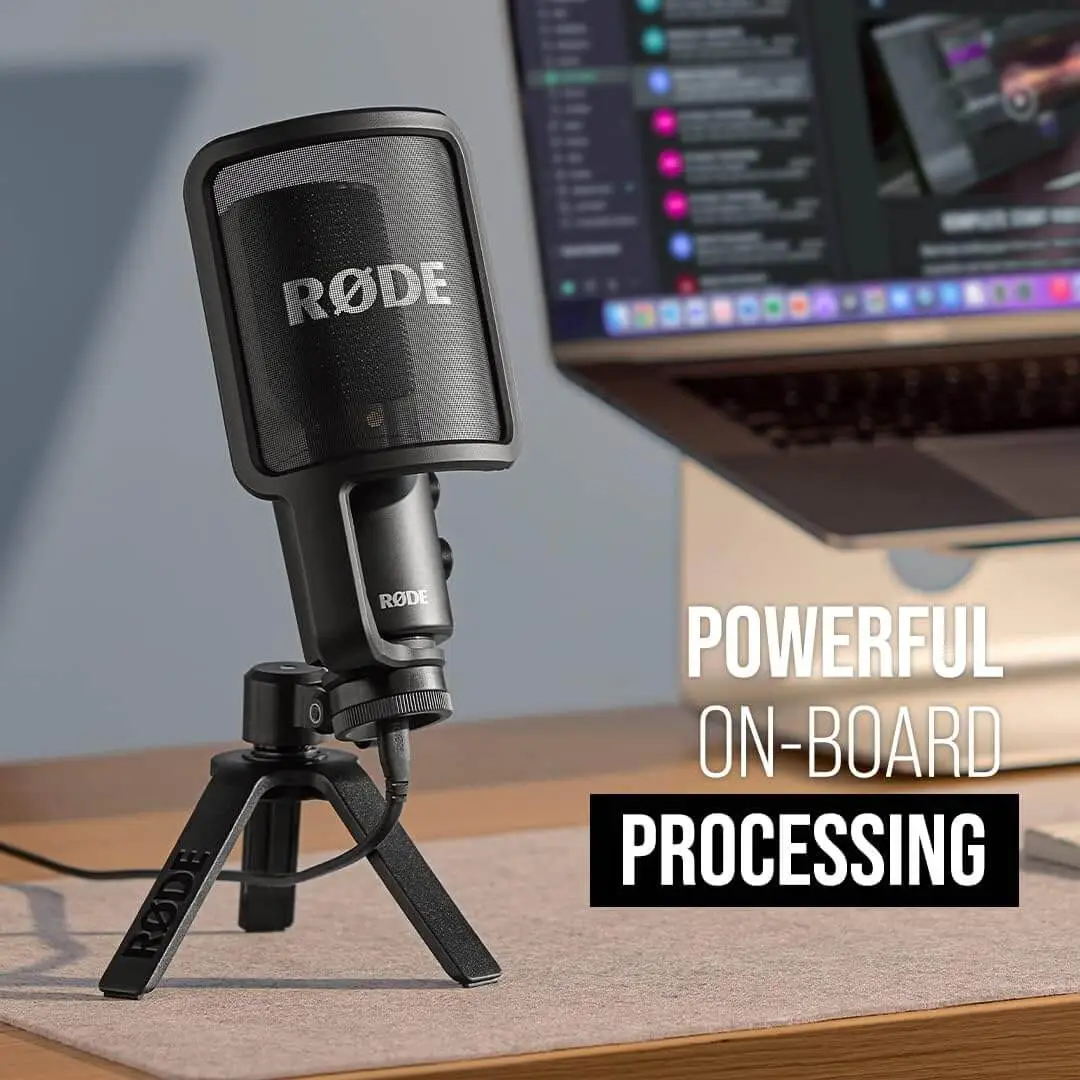
The Premium Choice for Uncompromising Quality
Rode is a titan in the microphone industry, and the NT-USB+ is a testament to their commitment to quality. This mic is for the podcaster who wants to invest in pristine, professional-grade audio from the start. It offers superior internal components for ultra-low noise and high-resolution recording.
Best Cameras for Social Media Marketing – Reviews & Buyer’s Guide
- Amazon Rating: 4.6 out of 5 stars from over 2,000 reviews
- Best For: Serious podcasters and creators who demand the highest audio fidelity.
Key Specifications
- Polar Pattern: Cardioid
- Sample Rate: 48 kHz / 24-bit
- Frequency Response: 20Hz – 20kHz
- Controls: Zero-latency headphone output with level and mix control (via Rode Connect software)
- Connectivity: USB-C
Personal Insight:
The key theme in reviews is the “exceptionally clean” audio. One audio professional commented, “The self-noise on this mic is practically non-existent. The 24-bit depth provides so much headroom for post-production.” Another reviewer praised the included pop filter: “The custom-fit metal pop shield is both effective and looks sleek.” The main point of consideration for buyers is its premium price tag.
5 Best Affordable Laptops for YouTube Video Editing : A YouTuber’s Guide
Pros:
- Pristine Audio Quality: Features a studio-grade condenser capsule and ultra-low-noise Revolution Preamp™.
- Superior 24-bit Depth: Provides a greater dynamic range for more flexible editing in post-production.
- Powerful DSP: Onboard digital signal processing for adding effects like a compressor and noise gate via Rode software.
- Premium Accessories: Includes a high-quality detachable pop filter and desktop stand.
- Future-Proof Connectivity: Modern USB-C port for easy connection to computers and tablets.
Cons:
- Higher Price Point: It’s a significant investment compared to other USB mics.
- Single Polar Pattern: Focused on being the best possible cardioid usb microphone for solo podcast use, lacking versatility for other scenarios.
Personal Insight:
The Rode NT-USB+ is what you buy when you want to eliminate any question about your audio quality. The jump to 24-bit audio is noticeable for those who are serious about sound design. Based on extensive research into microphone preamps, the Revolution Preamp™ technology in this device is a serious advantage, delivering a clean, powerful signal that needs very little cleanup.
Invest in broadcast-quality audio—shop the Rode NT-USB+ on Amazon!
Fifine K669B USB Microphone
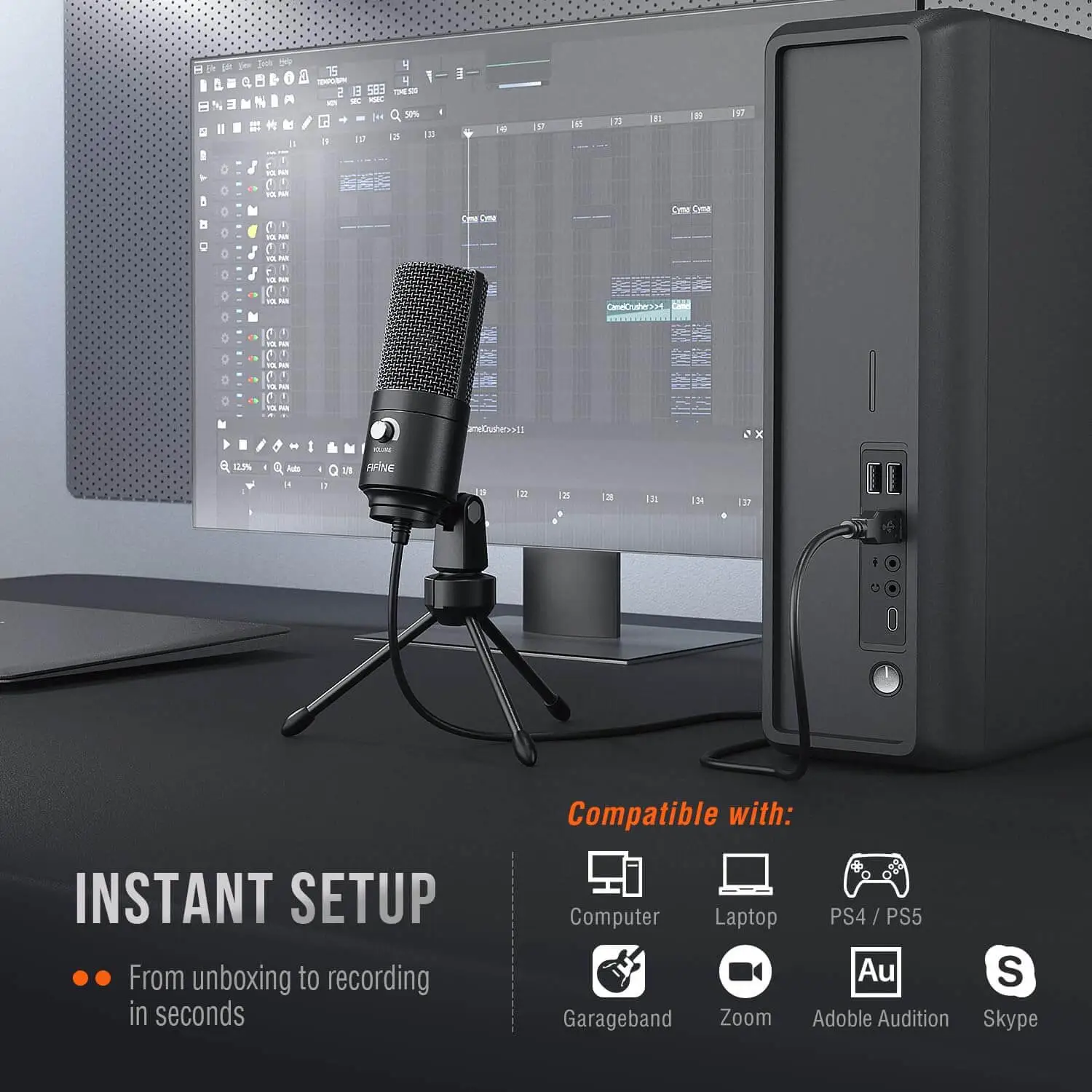
The Unbeatable Budget King
Proof that you don’t need to break the bank for good audio, the Fifine K669B has become a legend in the budget-friendly space. It delivers clear, consistent audio for a fraction of the price of its competitors, making it the ultimate usb podcasting mic for beginners.
Best Windows Laptop for Video Editing – Reviews & Buyer’s Guide
- Amazon Rating: 4.5 out of 5 stars from over 50,000 reviews
- Best For: New podcasters, students, or anyone on a tight budget.
Key Specifications
- Polar Pattern: Cardioid
- Sample Rate: 48 kHz / 16-bit
- Frequency Response: 20Hz – 20kHz
- Controls: Volume control knob on the mic body
- Connectivity: USB-A (hardwired cable)
Personal Insight:
Reviewers are consistently shocked by the quality-to-price ratio. “I bought this expecting it to be a temporary solution, but the sound is so good I haven’t felt the need to upgrade,” is a common sentiment. Another user said, “It’s the definition of plug and play. My PC recognized it instantly and it worked flawlessly. Perfect for someone not tech-savvy.” The primary drawback noted is the permanently attached USB cable, which can’t be replaced if damaged.
Pros:
- Incredible Value: Offers surprisingly clear audio quality for its rock-bottom price.
- Extremely Easy to Use: A true plug-and-play device with no drivers or software required.
- Solid Metal Construction: Despite the low price, the mic body is made of metal, not cheap plastic.
- Convenient Volume Knob: Allows for quick audio level adjustments on the fly.
- Compact and Portable: Small size makes it easy to pack and transport.
Cons:
- No Headphone Jack: Lacks zero-latency monitoring, a key feature in more expensive models.
- Hardwired USB Cable: The non-detachable cable is a potential point of failure.
- Fewer Features: No mute button, polar pattern options, or gain control.
Personal Insight:
The Fifine K669B is the microphone I recommend to everyone starting out. It removes the financial barrier to entry for podcasting while still delivering audio that is more than good enough for listeners. For an affordable usb mic for streaming and podcasting, its performance is simply unmatched. It’s a low-risk, high-reward starting point.
Start your podcasting journey today—find the Fifine K669B on Amazon!
Comparison of the Top USB Podcasting Microphones
To help you decide at a glance, here’s a quick comparison of our top picks:
| Product | Key Feature | Polar Patterns | Best For | Price Range |
| Blue Yeti | Unmatched Versatility | 4 (Cardioid, Bi, Omni, Stereo) | All-around podcasters | $$$ |
| Audio-Technica AT2020+ | Studio-Quality Clarity | 1 (Cardioid) | Solo vocals & narration | $$$ |
| HyperX QuadCast S | Smart, Convenient Design | 4 (Cardioid, Bi, Omni, Stereo) | Streamers & tech-savvy users | $$$ |
| Rode NT-USB+ | Premium Audio Fidelity | 1 (Cardioid) | Audio purists, professionals | $$$ |
| Fifine K669B | Unbeatable Budget Price | 1 (Cardioid) | Beginners on a budget | $$$ |
Conclusion: Your Perfect Podcast Mic Awaits
Choosing the right USB microphone is a huge step toward creating a professional-sounding podcast. Each of the five microphones reviewed here is a best-seller with a proven track record of satisfying thousands of creators.
Whether you need the all-around flexibility of the Blue Yeti, the vocal purity of the Audio-Technica AT2020+, the smart features of the HyperX QuadCast S, the premium sound of the Rode NT-USB+, or the incredible value of the Fifine K669B, your perfect audio solution is on this list. By investing in a quality microphone, you’re investing in your content and showing your audience you care about their listening experience.
Find the perfect best usb microphone for podcasting for your needs on Amazon today and start sharing your voice with the world.
Frequently Asked Questions (FAQ)
1. What is the best type of polar pattern for a solo podcast?
For a solo podcast where you are speaking directly into the microphone, a cardioid polar pattern is best. It captures sound from the front while rejecting noise from the sides and rear, ensuring your voice is isolated and clear. All the microphones on our list feature a cardioid pattern.
2. Do I need a pop filter for my podcasting microphone?
Yes, it is highly recommended. A pop filter reduces or eliminates “plosives”—the harsh puff of air from “p” and “b” sounds. The HyperX QuadCast S has one built-in, and the Rode NT-USB+ includes a high-quality one, but you may want to buy one for the other mics for the cleanest possible audio.
3. What is a zero-latency headphone jack and why is it important?
A zero-latency headphone jack, found on models like the Blue Yeti and AT2020+, allows you to plug headphones directly into the microphone to hear your voice in real-time as it’s being recorded, without any delay. This is crucial for monitoring your audio levels and delivery.
4. What’s the difference between 16-bit and 24-bit audio?
Bit depth determines the dynamic range of your audio. While 16-bit (like the Blue Yeti) is CD-quality and perfectly adequate for most podcasting, 24-bit (like the Rode NT-USB+) captures a wider range of volumes. This provides more flexibility in post-production to adjust volume without introducing noise.
5. Is a cheap USB microphone good enough to start a podcast?
Absolutely. A microphone like the Fifine K669B provides clear audio that is vastly superior to a laptop or phone’s built-in mic. Starting with an affordable USB mic is a smart way to test your commitment to podcasting before investing in more expensive gear.
6. Do I need any other equipment besides a USB microphone?
To start, all you need is the USB microphone and a computer with recording software (like the free program Audacity). For better results, consider adding a boom arm to position the mic correctly, a pop filter, and a pair of headphones for monitoring.
7. Can I use these microphones with a Mac and a PC?
Yes, all the USB microphones on this list are “plug and play” and are fully compatible with both Windows and macOS operating systems without requiring any special driver installation.

